Outlying tastes: a review of Beyond the Great Wall
 Monday, May 26, 2008 at 3:27PM
Monday, May 26, 2008 at 3:27PM 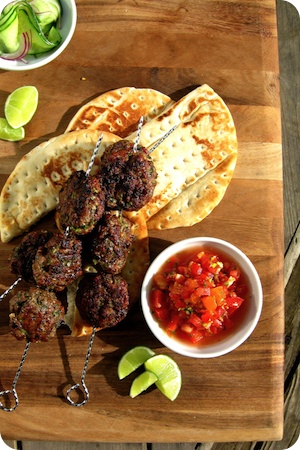
Can a cookbook be more than just an instruction manual? What if it could also be a travel journal, photo essay, cultural study, political commentary and a love letter to a country and its cuisine, all in one?
Jeffrey Alford and Naomi Duguid's latest book, Beyond the Great Wall: Recipes and Travels in the Other China presents the reader with all of that and more, wrapped up in a gorgeous (albeit heavy) package. For those familiar with these James Beard award-winning authors or any of their other five works, it is not surprising that this new title is a distinctive entry into the cookbook genre.
The third in what seems an unofficial series, Beyond the Great Wall is an exploration of the marginalized cuisine of China's non-Han people. It follows a similar template to their previous books that featured the foods of Southeast Asia and the Subcontinent; an encyclopaedic introduction sets out the historical, geographic and cultural foundations for the rest of the book, with meticulous attention to detail and helpful illustrations whenever appropriate.
From there the recipes (organized in sections such as condiments, rice and by various proteins) are interspersed with the authors' travel journal entries and evocative location photos. These essays and images, the former written over a span of 25 years and featured chronologically, continuously bring the reader back to the book’s anthropological leanings, as it follows Alford and Duguid’s personal experiences with a country, its cuisine and its people. Their reflections are poignant vignettes, capturing intimate moments frozen in the otherwise kaleidoscopic pace of change China has experienced since the mid 1980s.
While it could be considered their most political book to date, Beyond the Great Wall still manages to refrain from obvious agenda; the authors’ diary-style entries are offered as spontaneous impressions without context to specifically steer the reader’s opinion. Nonetheless, their inclusion does create a tension in the narrative as one cannot help but consider the juxtaposition of these traditional recipes and compelling images against Alford and Duguid's reflections on contemporary realities.
All of this aside, the heart of this book is the food. With its imposing stature (the book is a substantial 376 pages and a coffee-table worthy 11.4x9.6x1.5 inches) it would be all too easy to simply consider it an art object and never think to try a single dish. The food photography is simple, rustic and stunning, as captured by Richard Jung. My only wish would be that there were more of his images, as the dishes that are featured look nothing short of mouth-wateringly good.
That said, the recipes themselves are wholly accessible and too tempting to resist. Extensive headnotes provide additional inspiration, including detailed instruction, personal anecdotes on preparation, and ingredient sources and substitutions where necessary.
This is not the cuisine of central China; there is no mention of char siu or Beijing's famous roast duck. Many recipes require only a handful of ingredients and are well-suited to the kitchen of the home cook, with little required by way of speciality equipment.
Mongolian Lamb Patties (pictured, recipe below) are rich without being overly unctuous; the heaviness of the meat is undercut by fiery bits of ginger and garlic, along with a good handful of bright herbs. The grilled result offers a golden brown exterior with a satisfying bit of crunch and against a moist and flavourful centre. I served these alongside the Market Stall Fresh Tomato Salsa (from the Guizhou province), a surprising four-ingredient wonder that cleaned the palate beautifully.
I have to admit a deep and personal love of dumplings of all kinds; steamed, in soups or fried, I adore them all. You can imagine my excitement then as I poured over the dishes featured in the chapter on noodles and dumplings. Steamed Tibetan Momos, succulent parcels beef or lamb, could be dangerously addicting. The deep-fried version feature salty goat's milk cheese encased in a golden crust; perfect little bites to serve alongside the myriad of suggested condiments and a cold beer.
I had been wholly ignorant of the presence of tandoors and Indian-reminiscent nan in Xinjaing (home of the Uighur people) or another variation in the Pamir Mountains (home of the Tajik). The former version, stamped decoratively with a studded device, is baked at a high heat until golden and boasts a flat centre and a puffed rim. The latter is much more soft and pliant, due to a yoghurt-fortified dough and longer rising time.
There were other discoveries too; I would not have expected the absolutely straightforward Deep-Fried Whiting and Dai Grilled Chicken, or the simplicity of a Napa and Red Onion Salad from Inner Mongolia.
The list goes on. The recipes are thoughtfully-arranged for variety of textures and tastes; with each chapter the reader is inspired and intrigued again and again. As a fitting end, the book finishes with an afterword on travel with suggested itineraries, a comprehensive glossary and source guide.
Beyond the Great Wall is both absorbing and enlightening; the food makes you want to eat, the vistas make you want to travel, the stories make you want to explore and the faces make you want to understand. A wholly-satisfying journey is bound within its pages, and one feels benefited for having taken the trip.
Mongolian lamb patties
Jeffrey Alford and Naomi Duguid
Available through the recipe section of Alford and Duguid’s official website labelled, as Savory Lamb Patties; scroll down for the details.

Note: Please consider making a donation to campaigns in aid of those effected by the recent devastating earthquake in China’s Sichuan province; the Canadian Red Cross is just one of many international organizations co-ordinating relief efforts.


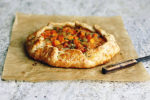
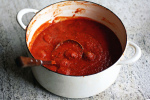
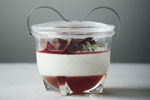
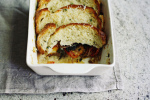
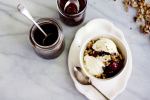










Reader Comments (7)
OOOOooooh, that looks GOOD!
jbxo
I'm really looking forward to this book!
I wonder what other recipes are in this book. I love looking through the photos and essays but I'd wan to get a little more info about the ingredients and recipes used. My only chinese cookbook is my mom :) I'd like to expand on that though!
I didn't know they came out with a new book. Thanks for bringing this to my attention. Hopefully I can find this in China without having to special-order.
Thanks my dear! All the taste testers approved of the dish; I think it will be a regular around here this summer.
little nutbrown hare, if you pick up a copy I do not think you'd be disappointed. It is a lovely book.
Amanda, I have tried to list as many recipes and ingredients as possible (nine), but you can understand that with such an epic tome it would be hard to include all the dishes in one column! If you are interested in more information, I would check out Jeffrey Alford and Naomi Duguid's official site (linked in the story) as they have some more recipes included there. Hope that helps!
appetiteforchina, you're more than welcome. I hope you are able to snag yourself a copy.
Very Very visually appealing…great presentation
Houses are expensive and not everybody can buy it. However, personal loans are invented to help people in such situations.